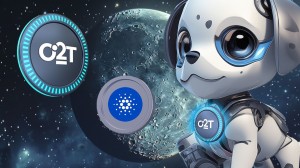In crypto, speed is everything. With few blockchains gaining substantial mainstream adoption, the performance data published by a network becomes a key tool for identifying the ones that can support breakthrough use cases and capabilities.
Though data on blockchain performance is sometimes inconsistent, unreliable, and incompatible, there are at least a few core dimensions where networks can be directly compared. These are transactions per second and transaction finality, as well as nodes and scalability dynamics.
Together, these elements combine to offer a picture of just how robust and powerful a given network is. Assessing the available data makes it possible to determine how blockchains compare to rivals.
Transactions Per Second
Blockchains are essentially platforms for transacting data, so it makes sense that transactions per second (TPS) is one of the key metrics users look at when comparing networks. It indicates how many transactions a blockchain can process in a single second. While some protocols handle different kinds of transactions, most can be directly compared.
Internet Computer – 11,500 TPS
The Internet Computer processes two different kinds of transactions on its network: update calls and query calls. Query calls (aka “reads”) involve the network retrieving data from one of its nodes, such as for HTTP requests, and don’t result in permanent changes to its state. Update calls (aka “writes”), on the other hand, do involve making changes, so can be considered “transactions” in the more conventional sense.
With update calls exceeding 11,500 per second, this can be said to be the upper limit of the Internet Computer’s current TPS. That said, query calls execute in milliseconds and can be processed at more than 250,000 per second. With query calls comprising 90% of the blockchain’s traffic, the protocol could be said to run at an even higher speed.
Avalanche – 4,500 TPS
Avalanche’s own benchmark tests reveal that the proof-of-stake blockchain can handle around 4,500 transactions per second, with “the full, production-ready version of Avalanche having the potential to achieve over 20,000 transactions per second.”
Avalanche actually comprises three separate chains: the Exchange Chain (X-Chain), Platform Chain (P-Chain), and Contract Chain (C-Chain). The C-Chain currently processes just under 9 TPS, although as with Cardano, this figure is low largely because Avalanche hasn’t witnessed substantial adoption yet.
Solana – 2,000 TPS
Current transaction data shows that Solana is processing around 2,000 TPS. Solana claims a theoretical maximum, based on its current specs, of 50,000 TPS.
That said, the platform has suffered four outages in the past few months that cast doubt on whether it can sustain 50,000 TPS in practice. The most recent outage, according to the official @SolanaStatus Twitter account, was “due to an increase in high compute transactions.”
Cardano – 250 TPS
In its current state, Cardano has been reported to be capable of processing a maximum of 250 TPS. As a proof-of-stake blockchain, it has greater scalability than proof-of-work chains such as Ethereum and Bitcoin, while planned future upgrades (involving layer-2 protocols) have been associated with theoretical limits of one million TPS.
However, according to data compiled by Messari, Cardano’s current rate is actually 2 TPS. This is likely because Cardano continues to build out its ecosystem and isn’t as widely used as others, with the platform only very recently registering total value locked in on DefiLlama.
Ethereum – 15 TPS
Ethereum currently processes an average of around 15 TPS, although it has risen to nearly 20 TPS at various points in the past year. Such a small throughput has resulted in average transaction fees on Ethereum rising as high as $70 at certain points in recent months.
However, Ethereum is planning to migrate to a proof-of-stake consensus mechanism in 2022. It also plans to eventually make use of sharding, which together with PoS is expected to deliver as many as 100,000 TPS, albeit in conjunction with layer-2 solutions, though this remains a theoretical rather than an actual ceiling.
Transaction Finality
Transaction finality describes the ability of a platform to confirm new transactions and add them to its blockchain. It’s usually measured in how many seconds a platform needs, on average, to guarantee that a transaction has become irreversible.
Internet Computer – 1 second
The Internet Computer’s architecture includes its central Network Nervous System (NNS) DAO, which is responsible for managing the network and its subnets. Transaction finality for the NNS DAO itself is achieved within 2 seconds, while finality for dapps, DeFi, NFTs, and social media is achieved in roughly 1 second.
Avalanche – 1.6 seconds
Avalanche’s current average time to finality, for all of its three constituent chains, is approximately 1.6094 seconds.
Solana – 21 to 46 seconds
According to its white paper, Solana has a theoretical transaction finality of 500 milliseconds or half a second. But Avalanche developer Kevin Sekniqi ran tests that saw Solana’s actual finality time range between 21 and 46 seconds, based on when the transaction received finalized confirmation status.
Cardano – 1 to 10 minutes
No reliable or official data is published on Cardano’s time-to-transaction finality. Some prominent members of the Cardano community have put it between 5 and 10 minutes, while members of its subreddit have suggested a time of approximately 1 minute.
Ethereum – 1 to 14 minutes
Official docs from ethereum.org suggest that transaction finality is achieved on Ethereum after six blocks, equivalent to about 1 minute. However, the reality is a finality time closer to 14 minutes.
Nodes
The number of nodes is a good metric for gauging the health and strength of a network since a higher count is usually a good indicator of decentralization. More decentralization generally means more security, insofar as a network can continue even if a portion of it goes down.
It’s also worth examining the number of nodes that don’t run on a centralized cloud server such as Amazon Web Services or Cloudflare, which provides insight into whether a given blockchain network relies significantly on big centralized providers and services.
Ethereum – 5,588 (68% cloud)
Data from ethernodes.org shows that Ethereum currently operates using 5,588 nodes, although this figure had been as high as 12,000 in February 2021. About 68% of Ethereum nodes run on a centralized cloud service, with nearly half of those on Amazon Web Services alone.
Cardano – 3,130 (? cloud)
According to adapools.org, there are currently 3,130 Cardano stake pools, with stake pools functioning as network nodes on Cardano. There is no available data on Cardano’s use of cloud service providers.
Solana – 1,442 (+70% cloud)
Solana Beach currently lists 1,442 validators on Solana’s network. Data from the Block Logic Validators.app shows that Amazon Web Services accounts for 33% of Solana’s nodes, while Hetzner, another big cloud provider, accounts for just over 19%. Other cloud service providers such as VHcloud and WEBNX also provide significant shares, putting Solana’s overall reliance on such providers at over 70%.
Avalanche – 1,238 (? cloud)
Avalanche’s own block explorer puts the number of validators on its network at 1,238. There is no data available for Avalanche on which percentage of nodes run on the cloud, but an official tutorial doc explaining how to set up a node using AWS suggests that it could be a significant number.
Internet Computer – 414 (0% cloud)
According to data from the Internet Computer dashboard, its network currently includes around 414 node machines. All of the Internet Computer’s nodes run on independent data centers spread throughout the globe, none of which are centralized cloud providers.
Scalability
Scalability measures the capacity of a blockchain network to add new users and traffic without sacrificing speed, efficiency, or cost-effectiveness. The more scalable a network, the more viable it is a widely adopted and used platform.
Internet Computer – No Linear Degradation
The Internet Computer theoretically offers indefinite scalability by adding new subnet blockchains to its network, allowing dapps to support millions of potential users. This is because the more nodes it has per subnet, the better its query capacity, with extra nodes enabling it to process more traffic. The key to this is the fact that each subnet is capable of processing calls independently.
Ethereum – Linear Degradation
As a proof-of-work blockchain, Ethereum’s performance degrades according to the amount of traffic on its network. This is evident in the fact that, during peak periods, it can have anything between 50,000 to 100,000 unconfirmed transactions (or more) in its mempool.
However, Ethereum is planning to transition to a proof-of-stake consensus mechanism, a change due at some point in 2022 (according to ethereum.org). It’s also due to introduce sharding, although this isn’t expected until 2023.
Cardano – Linear Degradation
While Cardano can handle more transactions per second than Ethereum, it cannot scale indefinitely or increase its capacities with more nodes. However, like Ethereum, it is planning an upgrade — dubbed Hydra — that will expand its capabilities, but there’s no clear timeframe for its delivery.
Solana – Linear Degradation, Potentially No Linear Degradation
Solana’s unique proof-of-history consensus mechanism is designed to operate horizontally, meaning that different validators can process different traffic. But this has not yet been implemented, and Solana has recently witnessed a number of outages resulting from an excess of complex transactions.
Avalanche – Linear Degradation
While Avalanche, as a proof-of-stake blockchain, is more scalable than either Cardano and Ethereum, its own white paper details how its throughput diminishes when its network grows in size. The effect is slight (about 1.34% when the network grows by a factor of 16), but it contrasts with the potentially unlimited scalability of either the Internet Computer or Solana.
Conclusion
Performance metrics are worth taking with a pinch of salt, if only because they are more open to interpretation than you might think, but a clear picture emerges from this overview. Overall, the Internet Computer offers superior speed and scalability than most of its peers, and while it may not currently have as many nodes, its scalability makes adding further nodes more than feasible.





